We are delighted to announce these Illustrious Invited Speakers have been confirmed for IEEE IUS 2019:
Medical Ultrasonics
Christy K. Holland, PhD, attended Wellesley College where she completed a double major (BA) in Physics and Music in 1983. She completed M.S.(1985), M.Phil. (1986), and Ph.D. (1988) degrees at Yale University in Engineering and Applied Science. She is currently a Professor in both the College of Medicine and the College of Engineering and Applied Sciences at the University of Cincinnati (UC) with joint appointments in the Department of Internal Medicine, Division of Cardiovascular Health and Disease, and the Department of Biomedical Engineering (BME). Prof. Holland serves as Scientific Director of the Heart, Lung, and Vascular Institute, a key component of efforts to align the UC College of Medicine and UC Health efforts around research, education, and clinical programs. She is a fellow of the Acoustical Society of America, the American Institute of Ultrasound in Medicine, the American Institute for Medical and Biological Engineering, and the Executive Leadership in Academic Medicine®. Prof. Holland continues to serve as Editor-in-Chief of Ultrasound in Medicine and Biology, the official Journal of the World Federation for Ultrasound in Medicine and Biology, a post she assumed in 2006. She served as President of the Acoustical Society of America from 2015 to 2017. She is actively involved in teaching biomedical engineering and biomedical ultrasound in the BME undergraduate and graduate curricula and received teaching awards in the UC Colleges of Engineering and Medicine in 2008 and 2009. She served as the Director of Graduate Studies for BME in 2007-2009. She mentors and advises students within and outside of BME educational programs. Prof. Holland’s research interests include ultrasound-enhanced thrombolysis for stroke therapy, ultrasound-mediated drug delivery, bioeffects of diagnostic and therapeutic ultrasound, and acoustic cavitation. She directs the Image-guided Ultrasound Therapeutics Laboratories in the UC Cardiovascular Center, which focus on applications of biomedical ultrasound including sonothrombolysis, ultrasound-mediated drug and bioactive gas delivery, development of echogenic liposomes, early detection of cardiovascular diseases, and ultrasound-image guided tumor ablation. Prof. Holland has gained wide recognition at UC, nationally and internationally for her contributions in ultrasound research, published in more than 119 scientific publications and 8 patents. View Abstract: Lipid-shelled microbubbles for ultrasound-triggered release of bioactive gases to treat stroke and cardiovascular disease Hideyuki Hasegawa received B. Eng. in electric engineering from Tohoku University in 1996. He received M. Eng. and Dr. Eng. degrees in electronic engineering also from Tohoku University in 1998 and 2001, respectively. After being a postdoctoral fellow of the Japan Society for the Promotion of Science, he became a research associate and associate professor at Tohoku University in 2002 and 2007, respectively. Since 2015, he has been a professor at the University of Toyama. His research interests include ultrasound beamforming, high-frame-rate ultrasound imaging, elastography, and blood flow imaging. View Abstract: Recent developments in adaptive beamforming Dr. Wiskin, Principal Scientist at QT Ultrasound Labs, B. Math., Pure &Applied Math, U. Waterloo, Canada, M.Sc. Biomathematics, Dalhousie University, Canada, Ph.D. (mathematics), U. Utah, was awarded a Descartes Fellowship, U. Waterloo, a Graduate Research Fellowship, U. Utah, and co-author of “Best Paper,” Comp. and Chem. Eng., 1990. He co-founded TechniScan (winner 2005 Stoel-Rives Innovation Award, Edison Conference, Medical Devices category – first place: “Utah Best of State” Science and Technology: Medical Innovation), now owned by QT ultrasound, and was PI on a 5 year NIH-NCI Grant and co-author on 14 Patents, 36 papers, several invited lectures and book chapters. View Abstract: Full Wave 3D Inverse Scattering Transmission Ultrasound Tomography: Breast and Whole Body Imaging Jensen Li is an Associate Professor at Hong Kong University of Science and Technology. His research revolves around various extraordinary wave phenomena given by metamaterials, with prominent examples such as invisibility cloaks and super-resolution imaging. His current research interests are in transformation optics, metasurfaces, non-Hermitian optics and complex media. He is active in extending the concepts of metamaterials to acoustic and elastic waves. View Abstract: Acoustic metamaterials: opportunities for translation in medical ultrasound Michael Insana received his PhD in medical physics from the University of Wisconsin – Madison in 1983. He is currently Donald Biggar Willett Professor in Engineering and a faculty member in the Departments Bioengineering and ECE at the University of Illinois at Urbana-Champaign. He also leads the Bioimaging Science and Technology group at the Beckman Institute on campus. He was the Head of the Department of Bioengineering in from 2008-2013 and again during 2017-2019. His research involves medical ultrasonic imaging as applied to cancer diagnosis and treatment monitoring. He develops instrumentation and methods for imaging soft tissue microstructure, viscoelasticity and blood flow. He also develops task-based optimization methods for designing and evaluating sonographic systems. Recently, he develops novel methods for characterizing large-scale networks and other nonlinear systems. Michael is a Fellow of the IEEE, Acoustical Society of America, Institute of Physics, and American Institute of Medical and Biological Engineering. He is Editor in Chief of the IEEE Transaction on Medical Imaging, and was co-chair of the 2016 and 2018 Gordon Conferences on Image Science. View Abstract: Advances in pulsed Doppler methods for peripheral perfusion imaging Paul Beard is Professor of Biomedical Photoacoustics at UCL and an ERC Advanced Grant holder. He has 20 years’ experience in biomedical photoacoustic imaging and optical ultrasound detection methods. His group pioneered the Fabry Perot ultrasound sensor for photoacoustic and ultrasound imaging and metrology applications. He is the author or co-author of over 200 publications in these areas. View Abstract: Optically resonant cavity detectors for photoacoustic and ultrasound imaging Dr. Démoré is an emerging leader in the field of micro-ultrasound imaging and technology. At the start of her academic careers, Dr. Démoré was the prestigious Royal Society of Edinburgh / Caledonian Research Fund Biomedical Personal Research Fellowship, held at the Universities of Dundee & Glasgow, and was awarded the 2015 IEEE Ultrasonics Young Investigator Award for her development of ultrasonic arrays for particle manipulation. Dr. Démoré was specifically recruited from the UK in August 2016 based on her recognized expertise in new ultrasonic technologies by SRI. Her research includes creating new micro-ultrasound devices for high-resolution imaging, using micro-ultrasound to visualise trauma to nerves caused by accidental needle contact or puncture during regional anaesthesia, and developing the imaging techniques to visualise changes in diseased tissue, such as blood flow dynamics and oxygenation with contrast-enhanced micro-ultrasound and photoacoustic imaging. Her expertise on micro-ultrasound transducer arrays for high-resolution imaging, particularly integrating the probes into needles and surgical tools, will translate into improving clinical navigation, diagnosis and intervention. Her research into new acoustic and photoacoustic contrast-enhanced techniques for visualising vasculature morphology and function will improve abnormal tissue function that will translate to better understanding of diseases and treatment efficacy in the CNS. Her research team has also created transducer arrays that generate reconfigurable ultrasound fields for dexterous manipulation of particles and cells, and experimentally demonstrated Sonic Screwdrivers and acoustic Tractor Beams. Dr. Démoré highly values and enjoys HQP training. She runs a graduate course on ultrasound physics for the Dept. Medical Biophysics, University of Toronto , has lead multiple short courses on ultrasound transducer technology at international conferences, and has run tutorials, labs, and has regularly lectured to undergraduate, and graduate-level audiences. She is currently part of a team delivering a series of Summer Schools for the IEEE Ultrasonics, Ferroelectrics and Frequency Control Society. Dr. Démoré has supervised many trainees from the undergraduate through post-doctoral levels. By fostering critical thinking and good laboratory practice, trainees realise their own solutions to research challenges. Trainees develop technical, translatable and communication skills for future careers in academia, industry, or as entrepreneurs. Dr. Démoré is also the Director of the Device Development Laboratory, unique in Canada as a hospital-based facility that supports academic and commercial prototyping of a broad range of medical devices. The facility allows HQP to acquire hands-on experience in device design, fabrication techniques suitable for small-scale manufacturing, precision characterisation measurements, quality management, and interaction with commercial clients. View Abstract: Ultrasonic Devices for Biomedical Applications: A Developing Career
Prof Christy Holland
University of Cincinnati, USA 
Prof Hideyuki Hasegawa
University of Toyama, Japan 
Dr James Wiskin
QT Ultrasound, LLC, USA 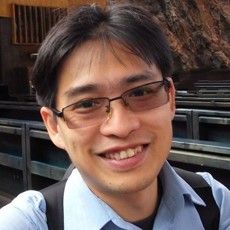
Prof Jensen Li
Hong Kong University of Science and Technology, Hong Kong 
Prof Michael Insana
University of Illinois, USA 
Prof Paul Beard
University College London, UK 
Dr Christine Demore
Sensors, NDE & Industrial Applications
Paul van Neer (1982) received his M.Sc. in Biomedical Engineering from Eindhoven University of Technology (Eindhoven, The Netherlands) in 2005. In 2010 he obtained his Ph.D. from the Erasmus University Rotterdam (Rotterdam, the Netherlands) for his work on the design of medical ultrasound hardware at the Erasmus Medical Center (Rotterdam, the Netherlands). In 2011 he joined TNO, an applied research institute in the Netherlands. Here, he worked at the Department of Process Intensification and Instrumentation on the development of ultrasonic measurement equipment, mainly for the chemical and oil and gas markets. In Jan. 2016 he joined the Department of Acoustics and Sonar (the Hague, the Netherlands), where he worked on the development of novel ultrasonic measurement equipment for industrial purposes, and the semicon and medical markets. He was promoted to the position of Senior scientist in May 2017. Since the end of 2017 he has a part-time (10%) position at the section of Acoustical Wavefield Imaging at the TU Delft, where he is involved in the supervision of 3 PhD students. He published >20 articles and is (co)inventor of >25 patents/patent applications. Examples of developed devices include tomographic flow/rheology meters, guided wave based flow, density and viscosity meters, nanoparticle sizing equipment, and ultrasonic NDT equipment. His research interests include (guided) wave propagation, nonlinear acoustics, ultrasonic signal and image processing, NDT, photo thermal acoustic imaging, transducer (array) design, and atomic force microscopy in combination with ultrasound. View Abstract: The role of guided waves in advanced ultrasonic flow meters Peter Cawley received BSc and PhD degrees in Mechanical Engineering from University of Bristol in 1975 and 1979 respectively. He worked in industry from 1979-1981 and then joined the Mechanical Engineering Department at Imperial College, London initially as a lecturer and then successively senior lecturer, reader and professor. He is now head of the Imperial College Mechanical Engineering department and leads the NDE research group; he is also the principal investigator of the UK Research Centre for NDE (RCNDE) that has its head office at Imperial College. He has published over 200 refereed journal papers and a similar number of conference papers in this field and holds 4 current patents. Peter Cawley is a fellow of the Royal Academy of Engineering and of the Royal Society. He is a director of Guided Ultrasonics Ltd that was set up to exploit the guided wave inspection and monitoring technology that was developed in his lab. From 2009-2016 he was chairman of Permasense Ltd that was set up to exploit his group’s work on wall thickness monitoring at high temperatures; the company was acquired by Emerson Inc in 2016. View Abstract: Ultrasonic structural health monitoring – current applications and potential Kui YAO received his bachelor degree in electronics engineering, master degree in technical physics, and Ph.D. in electronic materials and devices. Currently, he is a Principal Scientist, and the Program Manager for the material-critical Sensors and Transducers Programme at IMRE, A*STAR. He is also an Adjunct Professor in School of Material Science and Engineering (MSE), Nanyang Technical University (NTU). During 1998 – 1999, he worked in Materials Research Laboratory (MRL), The Pennsylvania State University, USA. Previously, he was a postdoctoral fellow in Microelectronics Center, NTU, during 1995-1997. His research areas cover smart materials, particularly piezoelectric and ferroelectric materials, advanced sensors, transducers and their applications enabled with piezoelectric and ferroelectric materials. View Abstract: Advanced piezoelectric ultrasonic transducers for structural health monitoring and photoacoustic imaging 
Dr Paul Van Neer
TNO, The Netherlands 
Prof Peter Cawley
Imperial College London, UK 
Yao Kui
A*STAR (Agency for Science, Technology and Research), Singapore
Physical Acoustics
Amin Karami is an Assistant Professor at Department of Mechanical and Aerospace Engineering at University at Buffalo, State University of New York. His area of expertise is vibration energy harvesting specially powering implantable medical devices using body movements. Dr. Karami has been a Postdoctoral Research Fellow at Department of Aerospace Engineering at University of Michigan, Ann Arbor. He received his PhD in summer 2011 from Virginia Polytechnic Institute and State University in Engineering Mechanics. He was a member of the inaugural class of ICTAS Doctoral Scholars Program and worked in the Center for Intelligent Material Systems and Structures (CIMSS). He earned a Master of Applied Science in Mechanical Engineering in 2006 from The University of British Columbia in Vancouver, BC, Canada and a B.SC. in Mechanical Engineering in 2004 from Sharif University of Technology. His research interests include Smart Materials, Energy Harvesting, Microelectromechanical Systems, Nonlinear Vibrations, and Dynamics of Nonlinear Systems. View Abstract: Nonlinear Vibration Energy Harvesting for Leadless Pacemakers Mihai has had a particularly diverse education which has included Fine Arts, Mathematics, Physics and Engineering. His PhD was obtained from University of Bordeaux, France, where he briefly worked there as an Assistant Professor in Mechanical Engineering. From 2009 to present he worked as an academic at the University of Bristol, UK. He is currently holding a Royal Academy of Engineering Enterprise Fellowship. Mihai is a recognised expert in metamaterials and field-directed colloidal assembly. He recently acted as external consultant for NASA’s MaterialsLab Open Science Campaign for Experiments on the International Space Station, and for ANR’s (French National Research Agency) Projects for Science. He is also contacted regularly by UK Research funders (e.g. EPSRC, Royal Society) to conduct peer-review on related projects/proposals. Most recently, Mihai founded Metasonics – a spin-out between the Universities of Bristol and Sussex in the UK. The technology Mihai wishes to commercialise comes directly from the research he led at Bristol in the area of acoustic metamaterials. View Abstract: Spatial Sound Modulation: From Acoustic Vortices and Levitation Andreas Fichtner is Professor of Seismology and Wave Physics in the Department of Earth Sciences at ETH Zurich. His research is focused on the development of waveform inversion techniques, including a diverse range of aspects, such as numerical wave propagation through complex media, high-performance computing, large-scale data analysis, Bayesian inference and Monte Carlo methods, as well as effective medium theory. Though most applications are in seismic imaging for deep Earth structure, his group actively engages in technology transfer to medical imaging and material testing. Andreas Fichtner is the author of 3 books on applied mathematics and geophysics, and of around 80 research papers in various international journals. He received early career awards from the American Geophysical Union and from the International Union of Geodesy and Geophyics. In addition to ETH Zurich, he has been affiliated with LMU Munich, Utrecht University, Stanford University and the Australian National University. View Abstract: Faster Full-Waveform Inversion Marco A. B. Andrade is a lecturer at the Institute of Physics of University of São Paulo, Brazil and his main research interest is to develop new strategies to levitate and manipulate objects with sound. He received the bachelor’s degree in physics from the Institute of Physics, University of São Paulo, Brazil in 2004, and M.S. and D.Sc. degrees in Mechanical Engineering from Polytechnic School, University of São Paulo in 2006 and 2010, respectively. View Abstract: The role of primary and secondary acoustic radiation forces on the contactless manipulation of liquid droplets in mid-air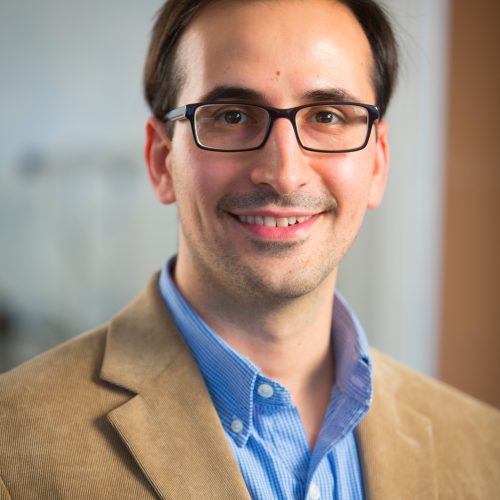
Dr Amin Karami
University at Buffalo, State University of New York, USA 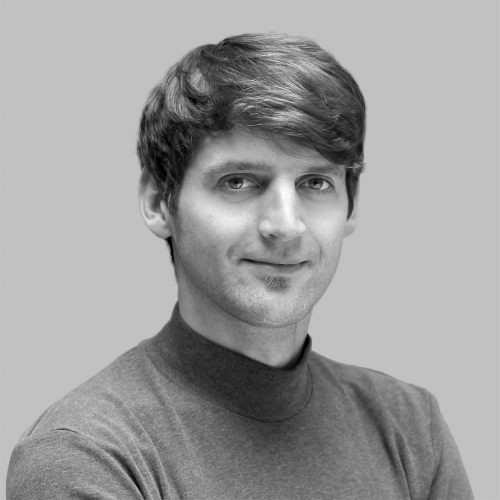
Mihai Caleap
University of Bristol, UK 
Andreas Fichtner

Marco A. B. Andrade
Microacoustics-SAW, BAW & MEMS
Andreas Mayer received his Dipl.-Phys. degree in 1983 and his Dr. rer. nat. degree in 1985 at the University of Münster, Germany. After research work at the universities of Münster, Perugia, Edinburgh and UC Irvine on lattice dynamics, surface physics and nonlinear optics, he was an assistant and Privatdozent at the Physics Department of the University of Regensburg, Germany (1991-2001). In 2002, he joined Siemens VDO as a development engineer and in 2008 he became a professor at HS Offenburg – University of Applied Sciences. His main research interests are in micro-acoustics, especially nonlinear effects on the propagation of guided waves. View Abstract: Advances in FEM modelling of nonlinearities in surface acoustic wave devices Dr. Karl C. Wagner is with RF360 Europe GmbH. He has received a diploma degree in electrical engineering and a PhD degree in technical sciences at Vienna University of Technology (Vienna, Austria). He has more than 25 years of experience in the development of microacoustic components, and in managing R&D projects. His field of research includes especially the simulation of acoustic, electromagnetic, thermal and coupled fields in electronic components, as well as the design of SAW components for wireless communication systems. He is an active member of IEEE UFFC and MTT Societies and currently serves as a TPC group co-chair for IUS. View Abstract: Advanced TC-SAW Filter Technology for 5G Wireless Systems Tetsuya Kimura (M’18) was born in Shimane, Japan in 1972. He received the B.S. and M.S. degrees in Mechanical Engineering from Okayama University, Okayama, Japan, in 1995 and 1997, respectively. In 1997, he joined Murata Manufacturing Co., Ltd., Kyoto, Japan, where he has been researching and developing acoustic wave devices. He is currently a Ph. D. candidate in Chiba University under the supervision of Professor Ken-ya Hashimoto while he works as a senior researcher in Murata Manufacturing Co., Ltd. View Abstract: A High Velocity and Wideband SAW on a Thin LiNbO3 Plate Bonded on a Si Substrate in the SHF Range Ausrine Bartasyte is a full professor at the Institute FEMTO-ST, University of Bourgogne Franche-Comté (Besançon, France). A. Bartasyte has an experience of 17 years in deposition of epitaxial multifunctional oxides and their heterostructures (superconductors, mixed conductors, high-k dielectrics and ferroelectrics. She received her Ph.D. in 2007 from Grenoble Institute of Technology. She was a postdoctoral research assistant in Prof. A. M. Glazer’s group at the University of Oxford, UK, working on the crystal growth of LiNbO3–LiTaO3 solid solutions. She was an associate professor at University of Lorraine (2009-2013) and a chair of excellence of Labex ACTION at the Institute FEMTO-ST (2014-2019) in France. She took her sabbatical leave to Harvard University. At present, her research is focused on engineering of structural and physical properties of alkaline niobate/tantalate single crystals, films, heterostructures & nanostructures for miniaturized and/or integrated devices with better performance in acoustics, optics and energy harvesting.
Prof Andreas Mayer
Hochschule Offenburg – University of Applied Sciences, Germany 
Dr Karl Wagner
RF360 Europe GmbH, Germany 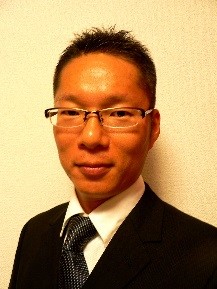
Tetsuya Kimura
Murata Manufacturing Co. Ltd., Japan 
Prof Ausrine Bartasyte
Transducers & Transducer Materials
Amin Arbabian received his Ph.D. degree in EECS from UC Berkeley in 2011 and in 2012 joined Stanford University, as an Assistant Professor of Electrical Engineering. His current research interests include mm-wave and high-frequency circuits and systems, imaging technologies, Internet-of-Everything devices including wireless power delivery techniques, and medical implants. Prof. Arbabian currently serves on the steering committee of RFIC, the technical program committees of RFIC VLSI, CICC, and ESSCIRC, and as associate editor of the IEEE Solid-State Circuits Letters (SSC-L) and the IEEE Journal of Electromagnetics, RF and Microwaves in Medicine and Biology (J-ERM). He is the recipient or co-recipient of the 2016 Stanford University Tau Beta Pi Award for Excellence in Undergraduate Teaching, 2015 NSF CAREER award, 2014 DARPA Young Faculty Award (YFA) including the Director’s Fellowship in 2016, 2013 Hellman faculty scholarship, and best paper awards from several conferences including ISSCC (2010), VLSI Circuits (2014), RFIC symposium (2008 and 2011, 2nd place), ICUWB (2013), PIERS (2015), MTT-S BioWireless symposium (2016), and BioCAS (2017). View Abstract: Ultrasonic Communication and Power Links for High-Bandwidth Micro-Implantables Operating at Depth 38 year veteran in ultrasound research and development. Significant contribution to over 25 released ultrasound products. Currently technical contributor and R&D leader for Butterfly Network: disruptive ultrasound innovator of the 21st century. Knowledge and experience in: ultrasound physics, signal and image processing, mathematical modeling, digital and analog hardware, people and project management, fast software, clinical ultrasound/echocardiology. View Abstract: Commercializing CMUTs and Deep Learning to realize Worldwide Ultrasound Democratization Paul Muralt is titular professor at Swiss Federal Institute of Technology EPFL at Lausanne, Switzerland. He leads a group working in electroceramic thin films within the Materials Science Institute, studying particularly piezoelectric and solid ionic MEMS and NEMS devices. Having a background (PhD) in solid state physics, he moved more and more into thin films, surface, and materials science for micro and nanotechnology. In his professional career he was working at the Swiss Federal Institute of Technology ETH, the IBM Research Laboratory in Zurich, the Free University of Berlin, and in a thin film coating industry (Balzers) before joining the Ceramics Laboratory at EPFL in 1993. His PhD studies dealt with incommensurate crystalline phases in an organic-inorganic layered perovskite structure. As a post-Doc, he pioneered scanning tunneling potentiometric imaging. Today, he is particularly known for his works in processing, characterization and applications of piezoelectric and pyroelectric thin films such as PbZrTiO3 and Al1-xScxN, including also works on materials integration, micro machining, and device physics. He teaches thin film deposition, micro and nano structuration, surface analysis and introduction to ceramics. He authored or co-authored over 250 scientific articles. He is IEEE Fellow, received the outstanding achievement award of the International Symposium of Integrated Ferroelectrics (ISIF) in 2005, and the C.B. Sawyer award from the IEEE International Frequency Control Symposium in 2016. He acted as co-chair of the MRS spring meeting 2008, co-organized MRS and E-MRS symposia, served in program committees of ISAF and ISIF conferences, and of the European Meeting on Ferroelectricity. He was an IEEE distinguished lecturer in 2017. View Abstract: Growth, properties, and applications of Al1-xScxN thin films
Prof Amin Arbabian

Karl Thiele
Butterfly Network 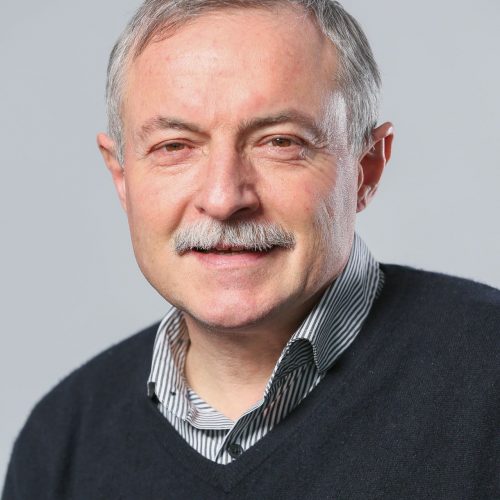
Prof Dr Paul Muralt
Ecole Polytechnique Federale de Lausanne, Switzerland